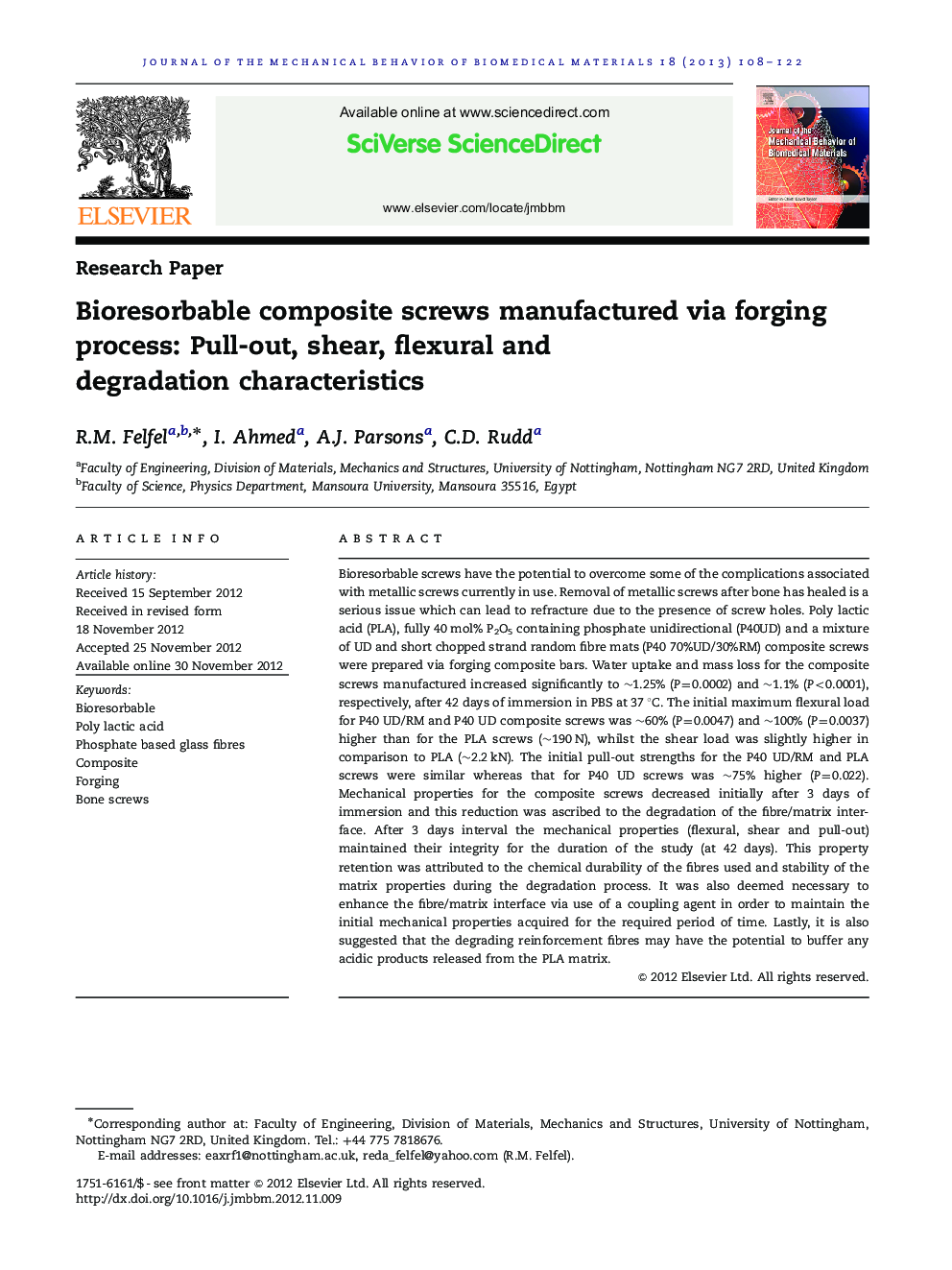| Article ID | Journal | Published Year | Pages | File Type |
|---|---|---|---|---|
| 811028 | Journal of the Mechanical Behavior of Biomedical Materials | 2013 | 15 Pages |
Bioresorbable screws have the potential to overcome some of the complications associated with metallic screws currently in use. Removal of metallic screws after bone has healed is a serious issue which can lead to refracture due to the presence of screw holes. Poly lactic acid (PLA), fully 40 mol% P2O5 containing phosphate unidirectional (P40UD) and a mixture of UD and short chopped strand random fibre mats (P40 70%UD/30%RM) composite screws were prepared via forging composite bars. Water uptake and mass loss for the composite screws manufactured increased significantly to ∼1.25% (P=0.0002) and ∼1.1% (P<0.0001), respectively, after 42 days of immersion in PBS at 37 °C. The initial maximum flexural load for P40 UD/RM and P40 UD composite screws was ∼60% (P=0.0047) and ∼100% (P=0.0037) higher than for the PLA screws (∼190 N), whilst the shear load was slightly higher in comparison to PLA (∼2.2 kN). The initial pull-out strengths for the P40 UD/RM and PLA screws were similar whereas that for P40 UD screws was ∼75% higher (P=0.022). Mechanical properties for the composite screws decreased initially after 3 days of immersion and this reduction was ascribed to the degradation of the fibre/matrix interface. After 3 days interval the mechanical properties (flexural, shear and pull-out) maintained their integrity for the duration of the study (at 42 days). This property retention was attributed to the chemical durability of the fibres used and stability of the matrix properties during the degradation process. It was also deemed necessary to enhance the fibre/matrix interface via use of a coupling agent in order to maintain the initial mechanical properties acquired for the required period of time. Lastly, it is also suggested that the degrading reinforcement fibres may have the potential to buffer any acidic products released from the PLA matrix.
